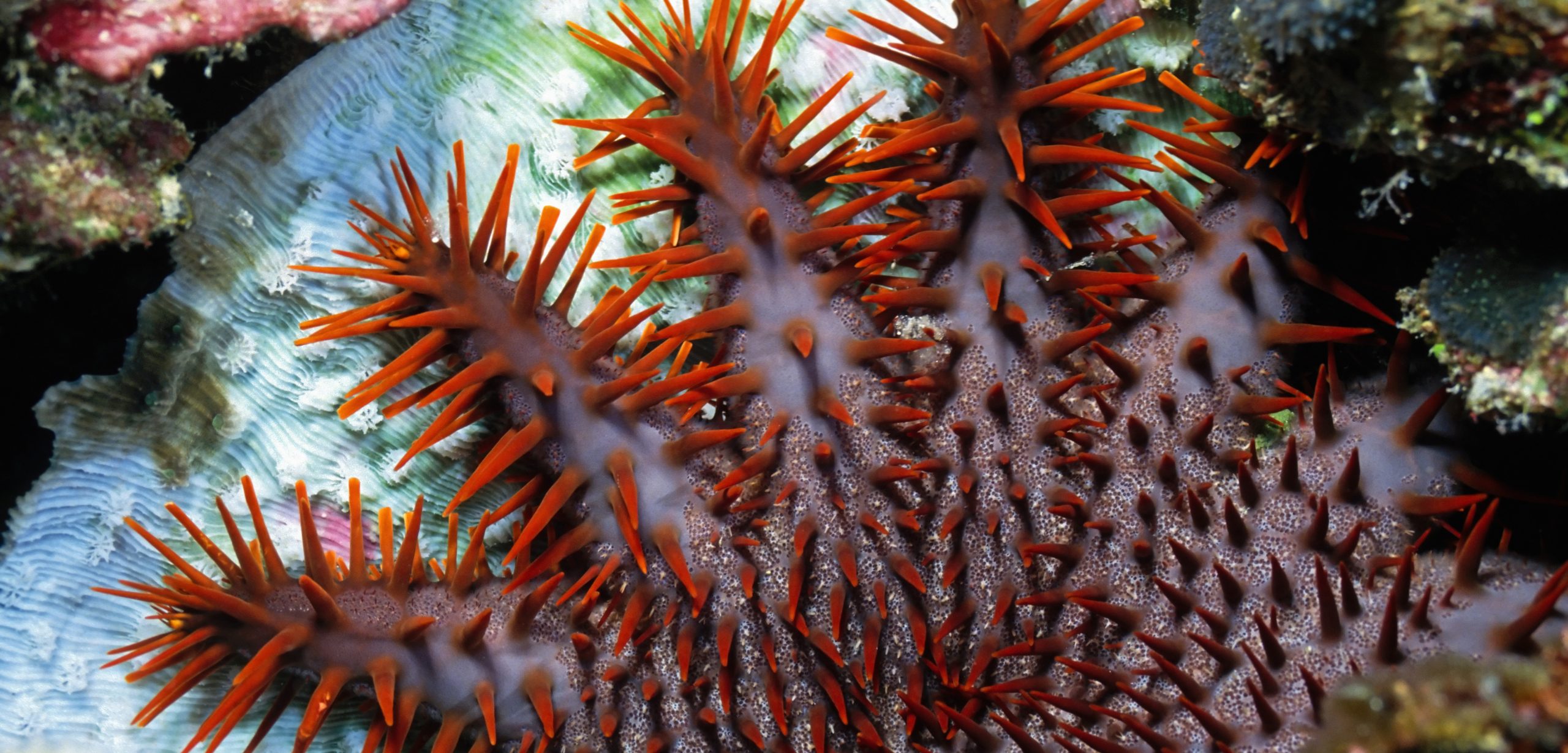A Shot of Lime
Lime juice is a cheap and easy way to exterminate crown-of-thorns starfish.
Article body copy
Every 16 years or so, a swarm of living pincushions descends upon the Indo-Pacific Ocean. Adorned with venomous spines and up to 20 arms each, thousands of crown-of-thorns starfish creep across the region’s coral reefs, devouring tiny coral polyps and leaving only white skeletons behind. The starfish eat until there is no coral left, and then they die—but not before releasing millions of tiny larvae to restart the cycle further down the reef.
This is an entirely natural cycle—and naturally destructive. So destructive, in fact, that they’re targeted by people fighting to protect coral reefs.
Historically, when the starfish ran out of food, the reef recovered, says Suzanne Mills, a marine ecologist at the Centre of Island Research and Environmental Observatory. But in recent decades recovery has been elusive as coral reefs face the additional pressures of climate change, pollution, and overfishing. “Which is why we need to come in and kill off these [starfish],” says Mills.
In many countries, people harvest the starfish and burn or bury them onshore—a labor-intensive chore. In countries that make big money off reef tourism—namely Australia where the starfish are responsible for nearly half of recent coral loss along the Great Barrier Reef—they inject the starfish with poison and leave them on the reef to die. It’s an imperfect solution, as the poison works slowly and can kill other reef life.
In 2012, scientists found a less damaging approach: injecting a starfish with ox bile will kill it in 24 hours without collateral damage to the reef. But ox bile can’t be found cheap at the corner store. In some Pacific countries where crown-of-thorns starfish are common, such as Vanuatu, it costs around CAN $1,200 to import enough ox bile to kill just 25 starfish. Yet island people arguably have an even greater need to control the starfish, says Mills. When an outbreak hits Vanuatu, fishermen struggle to find and catch reef fish, a major food source.
Mills and a crew of European and Vanuatuan researchers decided that they needed an injectable solution that works like ox bile but is as cheap and available as fruit trees in a tropical island nation. Luckily, they found their answer literally growing all over Vanuatu: limes.
In lab and field tests, Mills and her colleagues found that injecting lime juice into a starfish kills it in two days, and two injections kill it in less than 24 hours. Now, lime juice is being used on several Vanuatuan islands. Mills hopes the approach will spread throughout the country and beyond.
Yet whether it’s lime juice or ox bile, killing starfish by injection is only a stop-gap measure, says Jon Brodie, a marine ecologist at Australia’s James Cook University who has studied crown-of-thorns starfish since 1982 and did not contribute to the lime study. It works, but only on a small scale, he says.
Case in point: from 1970 to 1983 Japan spent 600-million yen (nearly CAN $1-billion in today’s dollars) removing 13 million crown-of-thorns starfish from Okinawa’s reefs. “It made no real impact on the population,” says Brodie. Crown-of-thorns starfish can swarm in the millions. “Killing them one at a time can’t possibly affect the population as a whole.”
While not a permanent solution, lime juice lets people kill starfish cheaply—not en masse, but hopefully enough to protect the reef when the crown-of-thorns come to visit.

